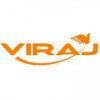
Tata Steel
Proud winner of ABECA 2025 - AmbitionBox Employee Choice Awards
Filter interviews by
Tata Steel Interview Questions and Answers
573 Interview questions
Effective customer engagement involves understanding their needs, building relationships, and providing tailored solutions.
Listen actively to customer concerns to understand their needs. For example, during a call, paraphrase their issues to show understanding.
Build rapport by personalizing interactions. Use their name and reference past interactions to create a connection.
Provide clear and concise information. If...
Implement targeted marketing strategies, enhance customer engagement, and leverage data analytics to boost sales effectively.
Conduct market research to identify customer needs and preferences, e.g., surveys or focus groups.
Develop targeted marketing campaigns using social media platforms, e.g., Instagram ads for younger demographics.
Enhance customer engagement through personalized email marketing, e.g., tailored o...
Conveyor pulleys are essential components in material handling systems, facilitating the movement of belts and materials.
Drive Pulley: Provides the driving force to the conveyor belt; commonly found in belt conveyors.
Idler Pulley: Supports the belt and maintains its tension; used in various conveyor systems.
Tail Pulley: Located at the end of the conveyor, it helps in returning the belt to the drive pulley.
Snub Pul...
Conveyor belts transport materials efficiently in industrial processes, enhancing productivity and workflow.
Facilitates the movement of goods between different production stages, e.g., from assembly to packaging.
Reduces manual labor and minimizes the risk of injury, as workers can focus on more complex tasks.
Improves efficiency by maintaining a continuous flow of materials, such as in automotive assembly lines.
Can...
A taffing roller is a mechanical component used in textile machinery for guiding and tensioning yarn or thread.
Used in weaving and knitting machines to maintain yarn tension.
Helps in preventing yarn breakage during production.
Can be found in various textile manufacturing processes.
Example: Taffing rollers are crucial in looms for consistent fabric quality.
Bearing clearances are the intentional gaps between bearing surfaces, crucial for proper function and longevity.
Clearance allows for lubrication flow, reducing friction and wear.
Too much clearance can lead to instability and vibration in machinery.
Too little clearance can cause overheating and premature failure.
Example: In engine bearings, clearances are typically in the range of 0.001 to 0.005 inches.
Clearance sp...
GTU stands for Gear Train Unit, crucial for mechanical systems in transmitting power and motion efficiently.
GTU is essential in gearboxes for vehicles, enhancing torque and speed.
Used in robotics for precise movement control.
Found in industrial machinery for efficient power transmission.
Example: In a car, the GTU helps in shifting gears smoothly.
A fitter is a skilled tradesperson who assembles, installs, and maintains machinery and equipment in various industries.
Fitters work with metal, wood, and plastic materials to create and assemble components.
They use tools like drills, saws, and welding equipment to shape and join materials.
Fitters often read and interpret technical drawings and blueprints to understand specifications.
Examples include pipe fitters ...
A control valve regulates fluid flow and pressure in a system, ensuring optimal performance and safety.
Control valves are essential in process industries for managing flow rates.
They can be automated or manually operated, depending on the application.
Examples include globe valves, ball valves, and butterfly valves.
Control valves work in conjunction with sensors and controllers to maintain desired conditions.
Effective practices for quickly grasping business requirements include active listening, stakeholder engagement, and thorough documentation.
Conduct stakeholder interviews to gather insights and expectations. For example, meet with team leaders to understand their needs.
Utilize questionnaires or surveys to collect information from a broader audience, ensuring diverse perspectives are captured.
Engage in active liste...
Tata Steel Interview Experiences
928 interviews found
(3 Questions)
- Q1. How to enhance production capacity in existing machinery ?
- Ans.
To enhance production capacity in existing machinery, consider optimizing maintenance schedules, upgrading technology, improving workflow efficiency, and training staff.
Optimize maintenance schedules to minimize downtime and ensure machinery is operating at peak performance.
Upgrade technology by investing in new equipment or implementing automation to increase productivity.
Improve workflow efficiency by analyzing proce...
- Q2. Difference between SOP and COP?
- Ans.
SOP stands for Standard Operating Procedure, while COP stands for Code of Practice. SOP is a set of step-by-step instructions to complete a specific task, while COP is a set of guidelines and best practices to ensure safety and efficiency in a particular industry.
SOP is more detailed and specific, outlining the exact steps to be followed in a particular process.
COP is broader and more general, focusing on overall guide...
- Q3. What is the key factors affecting operations and how briefly describe?
- Ans.
Key factors affecting operations include market demand, regulatory compliance, technology advancements, and workforce productivity.
Market demand: Fluctuations in demand can impact production levels and profitability.
Regulatory compliance: Adherence to safety and environmental regulations is crucial for operations.
Technology advancements: Implementing new technologies can improve efficiency and reduce costs.
Workforce pr...
I appeared for an interview in Dec 2024, where I was asked the following questions.
- Q1. What are bearing clearances?
- Ans.
Bearing clearances are the intentional gaps between bearing surfaces, crucial for proper function and longevity.
Clearance allows for lubrication flow, reducing friction and wear.
Too much clearance can lead to instability and vibration in machinery.
Too little clearance can cause overheating and premature failure.
Example: In engine bearings, clearances are typically in the range of 0.001 to 0.005 inches.
Clearance specifi...
- Q2. What is a taffing roller?
- Ans.
A taffing roller is a mechanical component used in textile machinery for guiding and tensioning yarn or thread.
Used in weaving and knitting machines to maintain yarn tension.
Helps in preventing yarn breakage during production.
Can be found in various textile manufacturing processes.
Example: Taffing rollers are crucial in looms for consistent fabric quality.
- Q3. What does GTU stand for and what is its significance?
- Ans.
GTU stands for Gear Train Unit, crucial for mechanical systems in transmitting power and motion efficiently.
GTU is essential in gearboxes for vehicles, enhancing torque and speed.
Used in robotics for precise movement control.
Found in industrial machinery for efficient power transmission.
Example: In a car, the GTU helps in shifting gears smoothly.
- Q4. What are conveyor safety devices?
- Ans.
Conveyor safety devices ensure safe operation and prevent accidents in material handling systems.
Emergency stop buttons: Allow immediate shutdown of the conveyor in emergencies.
Safety guards: Physical barriers that prevent access to moving parts.
Pull cord switches: Enable operators to stop the conveyor from a distance.
Photoelectric sensors: Detect objects and prevent jams or collisions.
Speed monitoring devices: Ensure ...
- Q5. What is a Palmer block?
- Q6. Types of pump
- Ans.
Pumps are mechanical devices used to move fluids by converting mechanical energy into hydraulic energy.
Centrifugal Pumps: Use rotational energy; common in water supply systems.
Positive Displacement Pumps: Move fluid by trapping a fixed amount; examples include gear and diaphragm pumps.
Submersible Pumps: Operate underwater; often used in wells and sewage applications.
Peristaltic Pumps: Move fluids through a flexible tub...
- Q7. What is the role of a conveyor belt in industrial processes?
- Ans.
Conveyor belts transport materials efficiently in industrial processes, enhancing productivity and workflow.
Facilitates the movement of goods between different production stages, e.g., from assembly to packaging.
Reduces manual labor and minimizes the risk of injury, as workers can focus on more complex tasks.
Improves efficiency by maintaining a continuous flow of materials, such as in automotive assembly lines.
Can be c...
- Q8. What are the different types of conveyor pulleys?
- Ans.
Conveyor pulleys are essential components in material handling systems, facilitating the movement of belts and materials.
Drive Pulley: Provides the driving force to the conveyor belt; commonly found in belt conveyors.
Idler Pulley: Supports the belt and maintains its tension; used in various conveyor systems.
Tail Pulley: Located at the end of the conveyor, it helps in returning the belt to the drive pulley.
Snub Pulley: ...
I appeared for an interview in Jan 2025.
(4 Questions)
- Q1. What has been your experience as an electrical engineer working in a supervisory role?
- Ans.
I have over 5 years of experience as an electrical engineer in a supervisory role, overseeing projects and managing teams.
Managed a team of electrical engineers on various projects, ensuring deadlines were met and quality standards were maintained
Developed and implemented safety protocols to ensure a safe working environment for all team members
Collaborated with other departments to coordinate project timelines and res...
- Q2. I am always done my work on time
- Q3. My work is always finishing and facing work
- Q4. I am all electrical work complete done
I appeared for an interview in Jan 2025.
(2 Questions)
- Q1. Condition base Maintenance
- Q2. Life saving Rules
(2 Questions)
- Q1. So many kinds of things
- Q2. Deuty is must But Saffty is first
(2 Questions)
- Q1. Tke my job for full onest
- Q2. Yes Ido my job
Interview Preparation Tips
I appeared for an interview in Jun 2025, where I was asked the following questions.
- Q1. Why want change
- Ans.
I seek change to enhance my skills, embrace new challenges, and contribute to a more secure environment in the organization.
Desire for professional growth: I want to expand my expertise in cybersecurity and risk management.
Embracing new challenges: I am eager to tackle complex security issues that require innovative solutions.
Contributing to a secure environment: I aim to implement advanced security protocols that prot...
- Q2. What you expect us
Interview Preparation Tips
I appeared for an interview in Dec 2024, where I was asked the following questions.
- Q1. HSE offer role and responsibilities
- Q2. Developing safety polices
- Q3. HSE Officer Roles and Responsibilities An HSE Officer (Health, Safety, and Environment Officer) plays a crucial role in ensuring workplace safety, protecting employees from hazards, and promoting a safe wo...
- Ans.
HSE Officers ensure workplace safety, compliance with regulations, and promote a culture of health and safety.
Develop safety policies aligned with OSHA and ISO standards.
Conduct risk assessments to identify hazards, e.g., evaluating machinery safety.
Ensure compliance through regular audits and inspections.
Organize training sessions to raise safety awareness among employees.
Investigate accidents to determine root causes...
- Q4. What is a workplace hazard? Hazards in the workplace occur when the working environment can cause injury, illness or death. The hazards can result from many of the different aspects of the working world, i...
- Q5. Cvem Daily Safety Officer Report to provide details of each days operation Use this Template Information Document No. Audit Title Client / Site Conducted on Prepared by Location Personnel Inductions All co...
I appeared for an interview in Dec 2024.
(4 Questions)
- Q1. What basic knowledge do you possess about your working field?
- Ans.
I possess a strong understanding of operations management principles and practices.
Knowledge of supply chain management and logistics
Experience with process improvement and optimization
Familiarity with project management methodologies
Understanding of quality control and risk management
Proficiency in data analysis and reporting
- Q2. Daily Consumption and Production
- Q3. What are the raw materials used in the production process?
- Ans.
Raw materials used in production process vary depending on the industry, but can include metals, plastics, chemicals, textiles, and more.
Metals (e.g. steel, aluminum)
Plastics (e.g. polyethylene, PVC)
Chemicals (e.g. solvents, acids)
Textiles (e.g. cotton, polyester)
Wood (e.g. lumber, plywood)
- Q4. What technical data is available for the equipment?
Interview Preparation Tips
I appeared for an interview in Feb 2025.
Features of power plant operation.
(1 Question)
- Q1. What are the best practices for the efficient operation of a power plant and the maintenance of equipment and drives, including periodic inspections and preventive maintenance, fostering a healthy work cul...
- Ans.
Efficient power plant operation requires best practices in maintenance, inspections, culture, and record-keeping.
Implement a robust preventive maintenance schedule to reduce unexpected downtime, e.g., monthly checks on critical equipment.
Conduct daily inspections of machinery to identify potential issues early, such as unusual vibrations or leaks.
Ensure availability of standby equipment to minimize disruptions during m...
Interview Preparation Tips
I appeared for an interview in Feb 2025.
(1 Question)
- Q1. Safely Work and responsible for this job
(1 Question)
- Q1. Safely job,completed within time frame,job responsibility.
Interview Preparation Tips
I appeared for an interview in Dec 2024, where I was asked the following questions.
- Q1. Mining is a process which deals with metal and minerals extracted from the earth crost or benifit of man kind is known as mining.
- Q2. Full from of DGMS.
- Ans.
DGMS stands for Directorate General of Mines Safety, responsible for ensuring safety in mining operations in India.
Established under the Mines Act of 1952.
Focuses on the safety and health of workers in mines.
Conducts inspections and audits of mining operations.
Implements safety regulations and guidelines.
Provides training and awareness programs for miners.
(5 Questions)
- Q1. What is a blast furnace?
- Ans.
A blast furnace is a type of metallurgical furnace used for smelting to produce industrial metals, generally iron.
Blast furnace is used to extract iron from iron ore through a process involving high temperatures and chemical reactions.
It consists of a cylindrical steel shell lined with refractory materials, with layers of coke, iron ore, and limestone added from the top.
Air is blown into the furnace from the bottom to ...
- Q2. What is the role of parameter control in a blast furnace?
- Ans.
Parameter control in a blast furnace is crucial for maintaining optimal conditions for efficient iron production.
Parameter control involves monitoring and adjusting factors such as temperature, pressure, gas composition, and raw material feed rates.
Maintaining proper parameters ensures consistent quality of the iron produced and prevents equipment damage.
Examples of parameters controlled in a blast furnace include blas...
- Q3. What is your job role in blast furnace operation
- Ans.
As a blast furnace engineer, my job role involves overseeing the operation of the blast furnace to ensure efficient production of iron.
Monitoring and controlling the temperature and chemical reactions in the furnace
Troubleshooting any issues that may arise during the operation
Collaborating with other team members to optimize production processes
Ensuring safety protocols are followed at all times
Analyzing data and makin...
- Q4. How you introduced to pci blast
- Ans.
I was introduced to PCI blast during my training as a blast furnace engineer.
Learned about PCI blast during formal education in metallurgical engineering
Gained hands-on experience with PCI blast technology during internships or on-the-job training
Attended workshops or seminars on the topic of PCI blast in the steel industry
- Q5. What is your productivity rate
- Ans.
My productivity rate is consistently high due to my efficient work methods and ability to prioritize tasks effectively.
I consistently meet or exceed production targets set by the company
I have a track record of completing tasks ahead of schedule
I am skilled at multitasking and managing my time efficiently
Top trending discussions






Tata Steel Interview FAQs
The duration of Tata Steel interview process can vary, but typically it takes about less than 2 weeks to complete.
Tell us how to improve this page.
Tata Steel Interviews By Designations
- Tata Steel Junior Engineer Interview Questions
- Tata Steel Assistant Manager Interview Questions
- Tata Steel Management Trainee Interview Questions
- Tata Steel Associate Engineer Interview Questions
- Tata Steel Manager Interview Questions
- Tata Steel Mechanical Engineer Interview Questions
- Tata Steel Intern Interview Questions
- Tata Steel Supervisor Interview Questions
- Show more
Interview Questions for Popular Designations
Overall Interview Experience Rating
based on 979 interview experiences
Difficulty level
Duration
Interview Questions from Similar Companies
Tata Steel Reviews and Ratings
based on 8.4k reviews
Rating in categories
|
Manager
1.5k
salaries
| ₹6 L/yr - ₹25 L/yr |
|
Assistant Manager
1.5k
salaries
| ₹5.2 L/yr - ₹15.8 L/yr |
|
Senior Manager
1.2k
salaries
| ₹9 L/yr - ₹35 L/yr |
|
Associate Engineer
1k
salaries
| ₹1.8 L/yr - ₹8.4 L/yr |
|
Junior Engineer
959
salaries
| ₹4.6 L/yr - ₹11.5 L/yr |

JSW Steel

Jindal Steel and Power

ArcelorMittal Nippon Steel

Jindal Stainless
- Home >
- Interviews >
- Tata Steel Interview Questions












